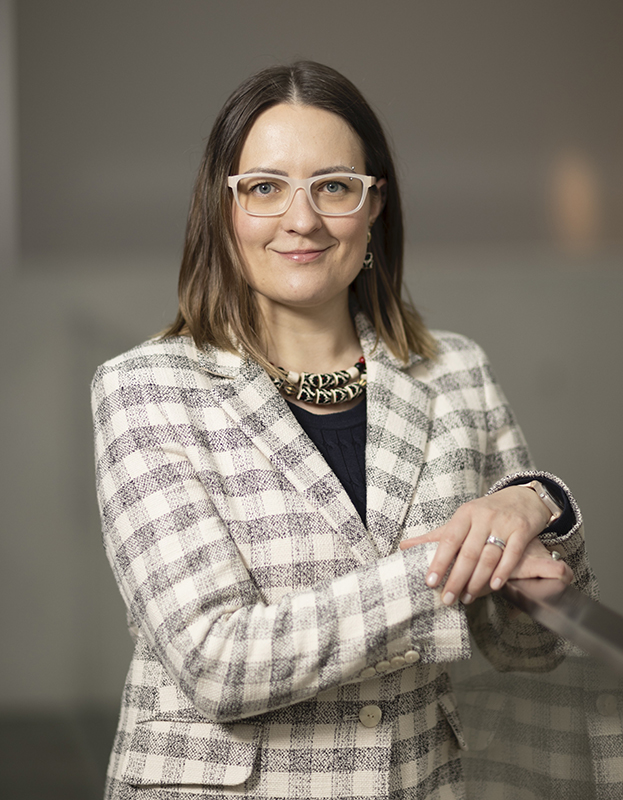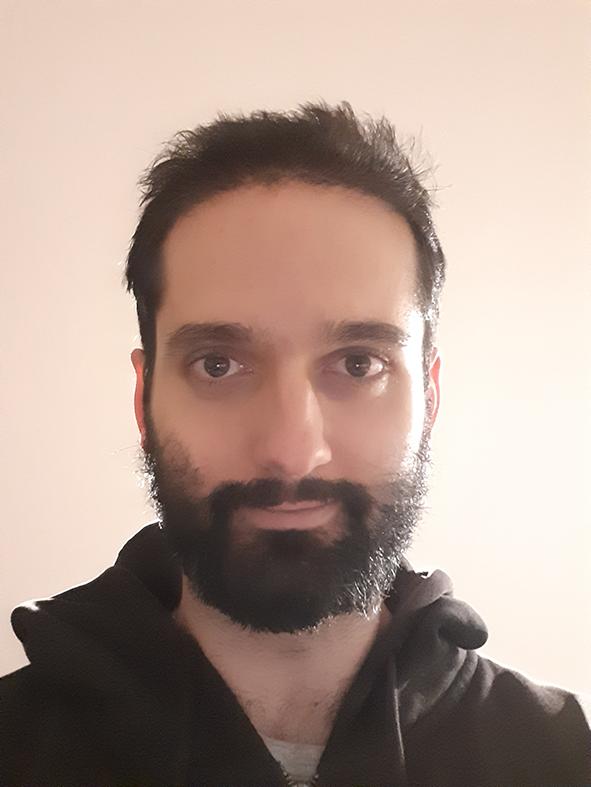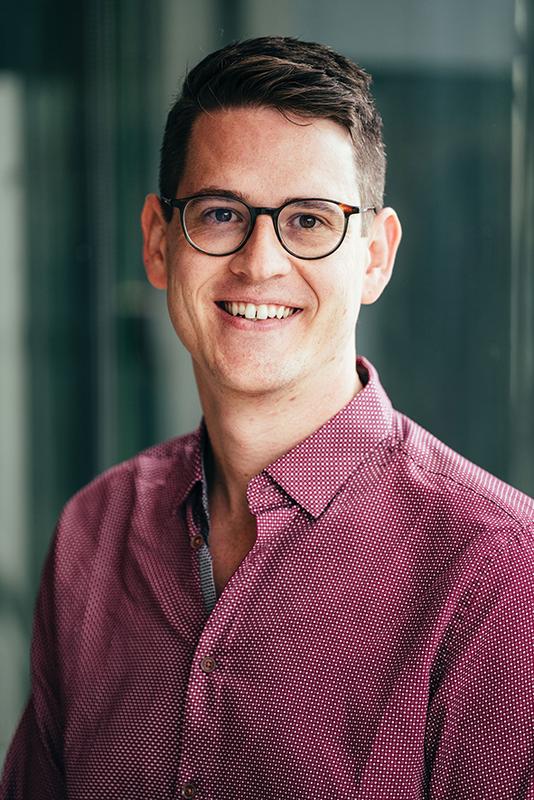10
“I came because I could find no other degree like it”: Digital Cultures
“I came because I could find no other degree like it”
For five years, Miriam Landa worked for social media advertising agencies in Sydney. She developed campaign strategies, created content, managed influencers and reported on outcomes. It was, in her words, “boots on the ground” work. Landa outgrew the role, but not the industry. She began looking at postgraduate study options in the UK, the USA and Australia but wasn’t finding anything suitable. Then Landa noticed the Master of Digital Communication and Culture at the University of Sydney. It was June 2020. She applied the same day and, within a week of receiving her acceptance letter, quit her job.
The program Landa arrived at has evolved from a Bachelor of Arts Informatics that began in 2000. Five years in, with insufficient enrolments, the Faculty of Arts and Social Sciences discontinued that degree. Kathy Cleland, Chris Chesher and John Tonkin reconstructed its units to form the basis of an undergraduate major and established a postgraduate program. These have proved prescient moves: in the first semester of 2021, eight percent of all FASS undergraduates are undertaking a Digital Cultures major or minor, which is astonishing given FASS undergraduates are choosing from more than 180 major/minor pathways. At the FASS postgraduate coursework level, there are more than 30 programs on offer, many of which include graduate certificate, graduate diploma and master’s levels; once again, eight percent of these students are choosing Digital Cultures.
Many factors have contributed to this impressive rise, including increasing numbers of international students; the shift from undergraduate degree to major, which widened the pool of potential students; and the choice to join forces with MECO in 2013 (see Chapter 4). These are some of the details Chesher enumerated when I asked him about the program’s success. Of the full-time faculty members who now teach and coordinate the program, Chesher is the one who’s been there since the Arts Informatics days. “No one knew what Arts Informatics was” he told me; clearly the rebranding exercise was another wise move.
When I posed the same question to Marcus Carter, who joined the team in 2017, he offered a more literary response. He told me, “There is a fundamental diamond in this, something extremely valuable.” As he said this, I could see, through my Zoom screen, that he was cupping his hands. What was he holding? To what does this metaphor refer? What are its contours, and what has pressed it into shape?
One of the defining forces has been the proliferation of digital media across the past two decades. As Chesher put it, his career “has paralleled the explosion in digital technology”. Since he started at the University of Sydney in 2004, the field of digital media studies “has gone from a marginal speciality” to a discipline that “now everyone understands the importance of”. When students explore the cultural context of “internet platforms, social media, research tools, digital audiences, mobile media, online governance, cross-media creative and games”, as the postgraduate program description promises, they are noticing anew the water through which they swim.
One postgraduate student, Nicole Lewis, who is 23, told me, “I’ve grown up with this [technology], but now is the first time I’m thinking critically about its impact.” Other students I spoke to made similar observations. When Vaibhavi Deshpande arrived, she was looking for a framework to understand the role of social media algorithms in her children’s lives. Lan Yang told me a highlight for her has been reconsidering video games through the lens of feminist theory in ARIN6904: Games and Mixed Realities. Carter, who coordinates that unit, thinks it’s this kind of curiosity that characterises the cohort: the students want to understand the relationship between these omnipresent digital platforms and the culture that both shapes and is shaped by them.
For most students, the curiosity that drove them to the Digital Cultures program is founded in their personal relationship to digital media. For others, like Landa, the relationship also has been professional; their experiences working within digital industries have engendered a desire to enlarge their perspectives and career prospects. Lewis’s internship at a communications firm in Miami prompted her interest in postgraduate study.
Another student, Tony Perna, is the assistant director of a campaign design and social media team for an Australian government agency. He told me that he’s learned most of what he knows about digital media from colleagues, and now the Digital Cultures program is providing an invaluable theoretical perspective. As someone who leads a team of employees, he wants to learn “to step away and understand what we do, to have a bigger picture”. “Why entrust this to the team at Sydney?” I asked. His response: “There is no other degree quite like it.”
I asked seven students to help me put together this story, all of whom I met while I was teaching ARIN6903: Digital Media and Society last semester under Chesher’s leadership. Perna’s response became a refrain that sounded through each of those conversations: I came because I could find no other degree quite like it. This is Landa’s story. It is also Lewis’s, who searched for a USA-based option but found that the University of Sydney “was exactly what I was after”. It is also Yang’s story, who transferred after undergraduate media studies at the University of Melbourne; Yulan Wu’s, who transferred from media at UNSW; and Hanlin Wang’s, who came after completing undergraduate media studies at a university in China.
The unique combination of digital studies and cultural studies is also what has attracted academics to the program. Justine Humphry began teaching at the University of Sydney in 2011, after completing a PhD on the way smartphones were transforming work practices and instituting a culture of mobility and flexibility. She taught into the undergraduate major and the master’s degree, developing and shaping a number of courses and the direction of the program. After four years of fixed-term contracts and a research fellowship, she moved to Western Sydney University, where she created a new unit on digital cultures. When an opportunity arose to return to the University of Sydney in early 2017, Humphry jumped at the chance. She was drawn back because of the program’s “very pioneering work, centring digital and social change as the core focus of the teaching and research”. Humphry said, “It was the only academic environment I’d come across where that was the focus and not an add-on.” She named some similar programs now available in Australia (at institutions like Curtin University, Queensland University of Technology, RMIT University and Monash University) but emphasised “ours is unique” and, “in 2017, we were the only ones doing that kind of work”.

Figure 10.2 Justine Humphry, 2017, photo courtesy of the University of Sydney

Figure 10.3 Olga Boichak, 2023, photo by Stefanie Zingsheim
Olga Boichak came to Sydney in October 2019 after finishing her PhD at Syracuse University and likens the experience of meeting her new colleagues to “finding a family”. After years researching digital media within the Syracuse social science department, the Digital Cultures program, she said, “gave me an identity that I didn’t have before”. Mark Johnson told a similar story: he also joined the Digital Cultures team in October 2019, after postdocs in sociology, computer science and political science departments in London and Alberta. Like Boichak, the Sydney team afforded him the opportunity to situate his work among other digital media scholars. The program, it seems, has become a home for likeminded trailblazers.

Figure 10.4 Mark Johnson, 2021, photo by Mark Johnson
Their convergence has been so successful, in part, because of the way they are pursuing a common purpose while still retaining distinctive research agendas. A conversation is occurring between Boichak’s work on digital activism and digital war; Johnson’s on live streaming and gamification; Humphry’s on the social consequences of mobile, smart and data-driven technologies; Carter’s on virtual reality and augmented reality; and Chesher’s on robotics, urban informatics and invocational media. As Carter described it, there is no “top down” approach operating; when new scholars joined the team, they were not asked to acquiesce to any “clear vision” of what the program does or where the limits of the digital cultures field lie. Instead, they’ve been asked to help contemplate these fundamental, shifting questions.
This collaborative approach occurs in various forums, including the monthly Digital Cultures Research Cluster meetings wherein team members and guests present and invite discussion about their latest research. Such work was promoted by the Socio-Technical Futures (STuF) Lab, established in 2018, and is being advanced through the new Centre for Digital Technologies and Societies, established in 2023. Collaboration is also happening when colleagues work together on international research teams, such as the investigation of street-smart furniture with scholars in Scotland or the investigation of robots in public space with colleagues in Korea. The aim, Humphry told me, has been to create “an environment that is inclusive and encouraging, shaping both the program and the field”.
The give-and-take ethos that characterises the team is also evident in their approach to teaching. In 2021, the team launched two new units, both of which had been developed cooperatively and are taught cooperatively. Whereas first-year Digital Cultures majors used to complete MECO1001 and MECO1002, which were shared with the Media and Communications students, they now undertook ARIN1001: The Past and Futures of Digital Cultures. Humphry, as Digital Cultures major coordinator, had led this development process, involving Digital Cultures colleagues in the design and inviting each to deliver a guest lecture in their area of speciality. Likewise, Carter, as postgraduate coordinator, launched ARIN6909: Emerging Technologies and Issues, a new core unit that all five scholars helped design and help teach.
As I spoke with Chesher, Humphry, Carter, Boichak and Johnson between December 2020 and February 2021, in the wake of a pandemic year, I heard them speak of one another with admiration and deep gratitude. I also began to recognise that the qualities they seemed to value most in their team were the qualities they sought to nurture in their virtual classrooms. Boichak, for example, told me how she tries to “adopt a philosophy of conviviality” where “students are learning through each other, getting to know each other and working together”. As part of this, she looks for ways “to create a sense of accomplishment, to celebrate achievement and to foster connections”. Johnson expressed his appreciation for the increase in one-on-one interactions with students that the online environment enabled. Carter, too, said one of his greatest achievements over the previous, fraught year was the way he was able to maintain connections with Digital Cultures PhD students over virtual coffees, a reading group and a network that they opened to PhD students internationally.
Perhaps we can say, then, that the “fundamental diamond” around which this program turns has been formed because of institutional decision-making and the cultural context of proliferating digital media. We can also say it has been extracted, and is being buffed to a shine, by the scholars who have been tasked with protecting it. Like all good metaphors, this one, in Carter’s words, “resists defining”, and that’s also part of its charm. When studying a field that is expanding daily, and with a group of scholars who offer distinct perspectives on that field, any attempt to define its parameters would necessarily diminish it. We can say, though, that Digital Cultures at Sydney is a site of unique interdisciplinary inquiry; of respectful, open-minded collaboration; and of expert-led education.
A comment Johnson made prompts me to add the “expert-led” modifier. He’s noticed that “there is no space and no field of work that attracts more charlatans than digital media”. When we’ve all become users of digital media and we’re all online with “some degree of competence” we might start to think we are experts. On the contrary, Johnson maintains, the current moment “makes genuine expertise important to foreground”.
Terry Flew, as genuine an expert as one could imagine, became the sixth full-time member of the team in April 2021. As I was finishing this chapter, I asked him what he envisages for the future of teaching within the field. One element that must be high on our agenda, he insists, is power. Most students come to us with a high level of technical proficiency, but what we offer them is a holistic and demystifying view. In our post-digital environment, where effectively all media is digital media, and media power is concentrated in the hands of a small number of technology companies, it is increasingly important, he contends, that our students engage with this concentration of power in terms of ethics, law and policy.
Some of our graduates will work for these digital behemoths and may, as Flew points out, join the trend whereby employees are becoming vocal critics. Other students have different plans. Landa wants to be part of governmental policy-making conversations and has her eye on the department of the Australian eSafety Commissioner. Lewis wants to work for a humanitarian organisation and oversee the creation of digital campaign materials that can reach people, like her, “who want to see the art of it all”.
